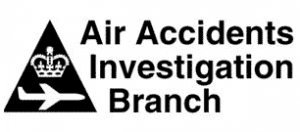UK’s AAIB issued a Safety Recommendation for Airbus to alert all operators of A320-series aircraft of the possibility that an electrical power generation system fault may not be clearly annunciated on the ECAM, and may lead to uncommanded rudder trim operation.
The BBC has reported the following in its article:
- “Airbus prepares safety warnings”
- “The pilots reported that without warning the aircraft began to shudder, banking steeply on its own – failing to respond to pilot commands over a period of several minutes.”
- “The aircraft’s left wing suddenly dropped without any input from the crew.”
- “For years, safety investigators have been concerned about electrical system glitches resulting in dangerous shutdowns of flight control computers.”
The article does sound scary and reading that, one cannot be blamed for shouting “SCAREBUS!” But seriously, what really happened?
The incident is still being investigated but the UK AAIB has issued a safety bulletin which includes the above mentioned safety recommendation.
You can find the AAIB Special Bulletin here.
In short, this is what happened (MY SUMMARY):
This recommendation is based on ongoing in investigation into the incident involving a British Midland A321-231 (G-MEDJ, IAE V2533-A5) at FL360 over Sudan on 24 August 2010 carrying 42 passengers. During the incident which took place at night on a flight from Khartoum (Sudan) to Beirut (Lebanon), the aircraft suffered an electrical malfunction which caused intermitten failure of the electronic displays and “abnormal aircraft reaction to control inputs.” A large number of ECAM messages and cautions came up during the abnormalities as well as an uncommanded rudder trip resulting in the aircraft adopting a left wing low attitude and deviate to the left. Problems with the displays suffering intermitten failure did not include the standby flying instruments (ISIS) but included the ECAM causing the crew not being able to troubleshoot the problems.
Eventually an ECAM message of “ELEC GEN 1 FAULT” was generated and the actions and checklists associated with the message was performed. The procedure included disengaging GEN 1 which stopped the failures. However the procedure also include re-engaging GEN 1, which caused the problems to return, so the crew decided to switch off GEN 1 at the end of the procedure.
The APU was started and its generator was engaged to replace the GEN 1 to power the systems powered by GEN 1. It was then that the crew realized that the rudder trim display indicated several units of left rudder trim which was uncommanded. After the rudder trim was reset to neutral the aircraft returned to wings level attitude. By then, the aircraft had deviated around 20NM left of track.
The aircraft was flown manually for the rest of the flight and landed in Beirut without any further problems.
Airbus has indicated that a reset of the Flight Augmentation Computer (FAC) caused by the electrical power interruptions could have caused an uncommanded incremental rudder trim offset, several resets due to the interruptions therefore could have yielded the significant rudder trim input the crew found on this incident.
The incident is believed to be caused by an electrical generation system fault which caused a number of challenges for the flight crew and the ECAM did not clearly indicate the root cause of the problem and therefore the crew had little information or procedures to assist diagnosing the problem (except for the final “ELEC GEN 1 FAULT”.
The incident continues to be investigated by the AAIB with cooperation from Airbus and BEA France.
In reaction to the safety recommendation, Airbus is to issue a safety bulletin to all of its operators alerting them of the incident. How does this differ from the BBC article?
With regards to “For years, safety investigators have been concerned about electrical system glitches resulting in dangerous shutdowns of flight control computers,” issues on aircraft systems and components arise all the time and aircraft manufacturers and component manufacturers (OEM’s) release these safety bulletins and service bulletins from time to time due to errors that are encountered and reported by the airlines operating their aircraft.
These SB’s correct the issue through a component upgrade/modification typically. If the issue is hot and compromises safety and it is critical to do this upgrade in a short time, government agencies will step in and release their own initiative.
This AAIB recommendation and the (upcoming) Safety Bulletin by Airbus does not mean that A320s will start falling out of the skies. The AAIB special bulletin does not report any of “banking steeply on its own – failing to respond to pilot commands over a period of several minutes” or “the aircraft’s left wing suddenly dropped without any input from the crew.”
A turn in normal flight is anywhere up to 33 degrees. Hence I, and I believe many in the industry (including flight crews/pilots), do not think that 10 degrees bank in this case can be termed as “steep.”
IF YOU DECIDE TO NEVER FLY ON AN AIRCRAFT THAT HAS HAD SAFETY BULLETINS APPLIED ON IT, YOU WILL NEVER FLY AGAIN BECAUSE ALL AIRCRAFT IN OPERATION WITH THE AIRLINES TODAY HAS HAD THEM!
So think and make sense of it through all the information publicly available before making your own conclusion with regards to aviation and especially aviation safety!

